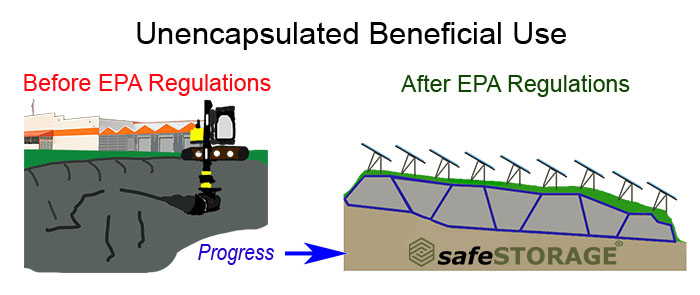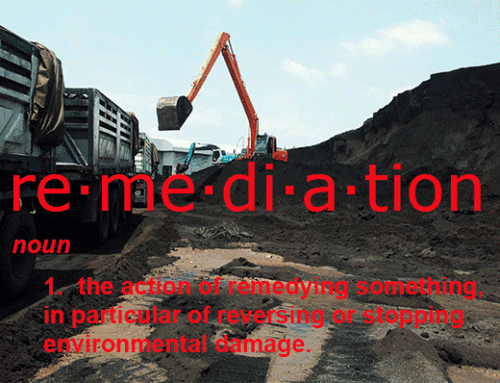Improper labels can hamper the best solutions and could force Utilities into a Micro approach to a Macro problem.
In public debate over the best disposition of legacy coal ash (CCR), the phrase “unencapsulated beneficial use” is used. However, “unencapsulated” solutions, such as mixing loose CCR into soil or spreading large quantities as fill on construction sites without environmental safeguards, are no longer considered viable options for beneficial use.
The method called “macroencapsulation” is considered by the EPA to be an “unencapsulated beneficial use.” This term, at least on the surface limits encapsulation beneficial use to a micro level (the CCR is fused or, in EPA terms, “encapsulated”) through recycling into another product like concrete or wall board. But if you look at macroencapsulation on a macro level, the CCR is FULLY encapsulated and rendered inert within a structure. Confusing? We know, since we understand the safeguards put in place for all beneficial use, But a simple label certainly has a negative impact.
The snag continues to lie in the semantics. The public continues to mistakenly view macroencapsulation – where coal ash is completely encased in an impervious barrier, in no contact with air, soil or groundwater whatsoever – an unencapsulated use. Although the EPA supports responsible beneficial use, the EPA’s definition of “unencapsulated” injects confusion into any discussion of the advantages of macroencapsulation and causes it to be discounted without considering the sound science behind it.
EPA regulations on beneficial use finalized in April 2015 have safeguards in place to exclude earlier methods of unencapsulated beneficial use that have proven dangerous.
At EnCAP-IT we have developed the Macroencapsulation tools (safeSTORAGE® and safeBERM®) that exceeds the EPA requirements, winning another argument against labeling it an “unencapsulated” approach.

The bottom line is that safeSTORAGE® and safeBERM® IS A METHOD OF ENCAPSULATION, and a Macro approach to the Macro problem caused by limitations of market demand for Micro approach.
The Only Problem with the Unencapsulated Beneficial Use Definition is the Word “Unencapsulated”





